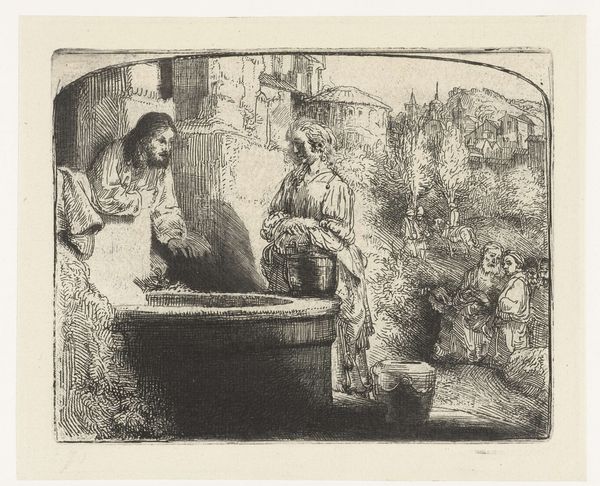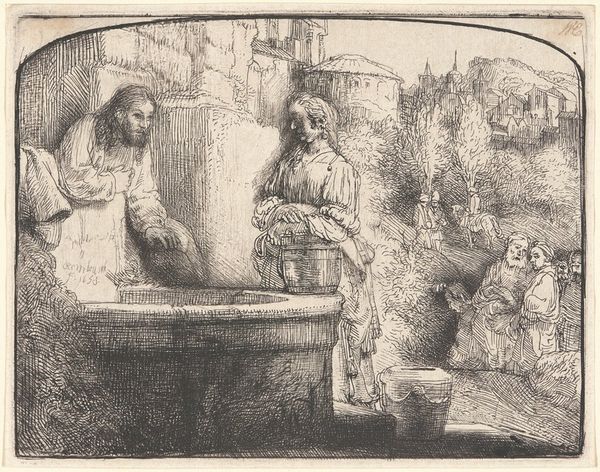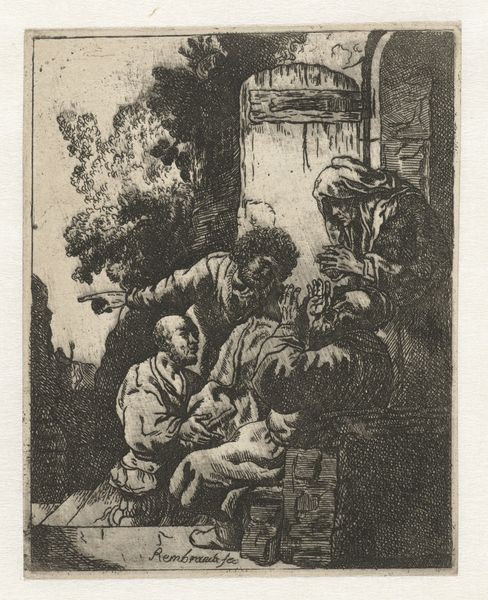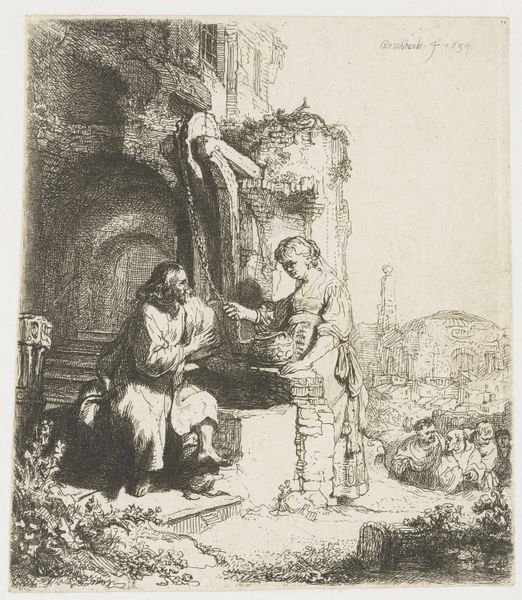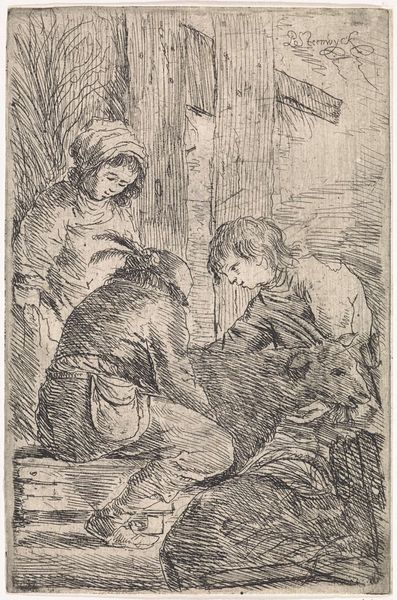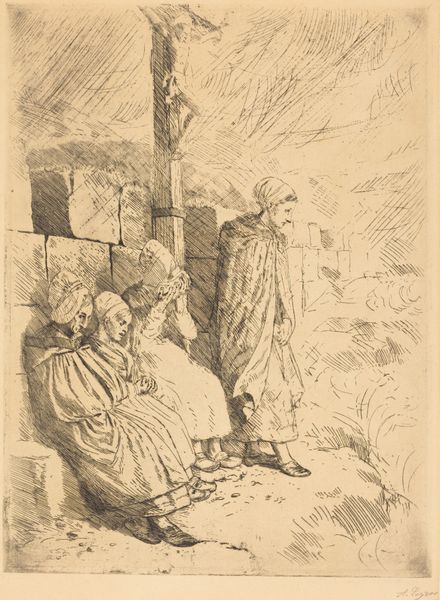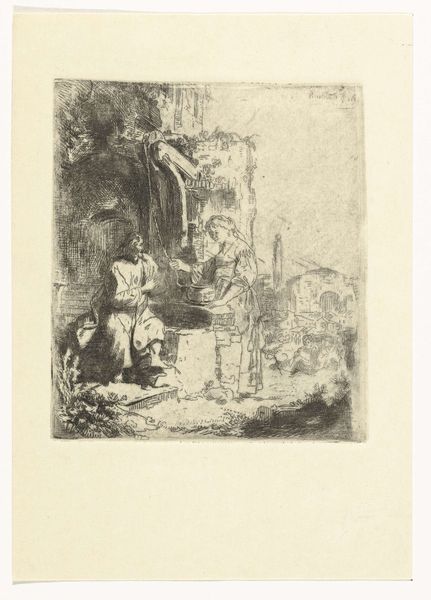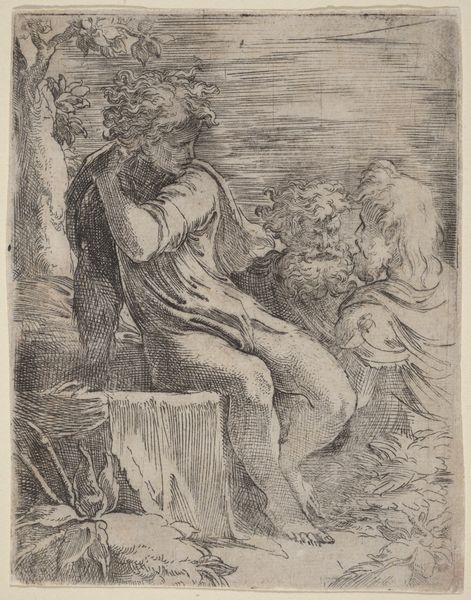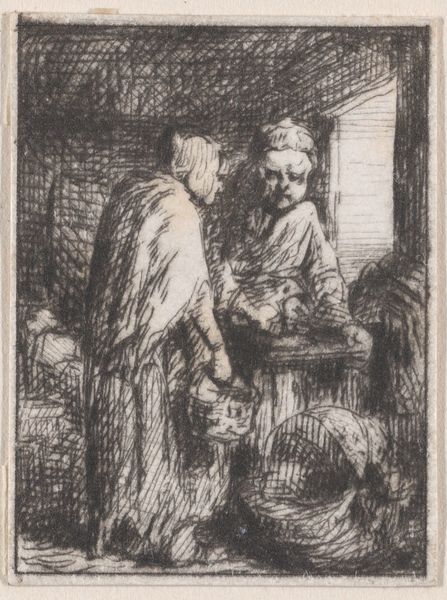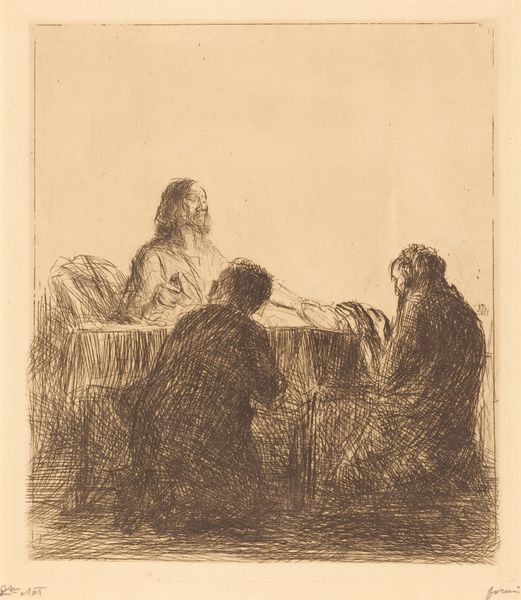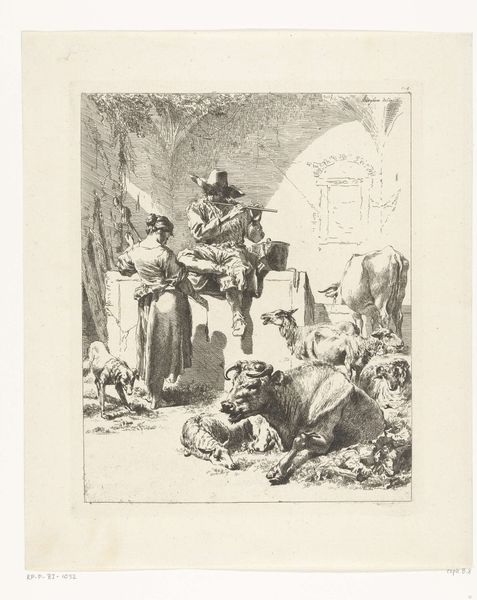
print, etching
#
narrative-art
#
baroque
# print
#
etching
#
landscape
#
figuration
Dimensions: height 204 mm, width 160 mm
Copyright: Rijks Museum: Open Domain
Curator: Ah, Rembrandt. Looking at this print, “Christ and the Woman of Samaria,” made in 1657, hanging here at the Rijksmuseum, I can feel the weight of centuries just... dissipate. It feels immediate, like a whispered secret. Editor: It's interesting, that immediate feeling. To me, it feels so carefully constructed, this etched narrative laid out on paper. What’s striking is the labor behind each tiny stroke of that etching needle; the almost industrial process in getting the master's art to the masses. It begs the question: What even constitutes the "original"? Curator: That labor, that careful crafting—it’s a form of devotion, isn't it? He's imbuing every line with such concentrated emotion. You can almost see the woman’s heart opening in the flickering light. He’s letting the light touch what needs to be illuminated within her. Editor: Yet what I see highlighted most are the everyday items - the well where they meet, the buckets used for their daily lives. It almost seems Rembrandt wants us to consider that it’s not a grand theological battle, but instead it happens through routine work, labor, and ordinary conversations. Curator: Absolutely, it is profoundly intimate. Even the landscape surrounding them feels like a participant in this subtle, transforming exchange. The etching captures that fragile moment when beliefs shift. What are you thinking about, those other people, watching this conversation? I like to see how he brings so many lives, those of observers too, into the center. Editor: That focus is clever: look closely, you see the wear and tear on the very copperplate itself becomes another layer of "reality," highlighting that this spiritual awakening is deeply interwoven within our material conditions. The image and object itself shows time, doesn’t it? Curator: You are so right. Even as we stand here observing, reflecting, our understanding shifts; our experience of this etched scene alters our reality too. Isn't that what art does, ultimately, change everything around us. Editor: Definitely. It reveals how our interpretation hinges not only on spiritual contemplation, but also an active consideration of our social context, the labor involved, and our individual consumption. Every piece invites new insight.
Comments
No comments
Be the first to comment and join the conversation on the ultimate creative platform.
